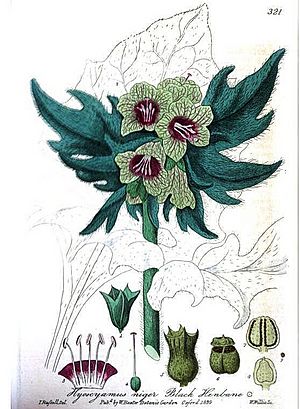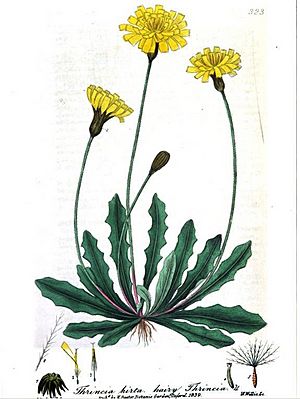British Phaenogamous Botany facts for kids


British Phaenogamous Botany is a famous collection of books filled with drawings and descriptions of British flowering plants. It was put together by a talented botanist named William Baxter. This amazing work helped people learn about the plants growing in Britain long ago.
Contents
What is British Phaenogamous Botany?
This special collection of books was published in Oxford, England. It came out in six different parts, or volumes, between 1832 and 1843. The publisher was J.H. Parker, a well-known company at the time.
The Art of Plant Illustration
The books contain 509 beautiful illustrations of plants. These pictures were made using a special method called "copper-engraving." This means the artists carved the plant images onto copper plates. Then, ink was applied to the plates and pressed onto paper to create the prints.
What makes these illustrations even more special is that they were all coloured by hand! Each picture was carefully painted to show the true colours of the plants.
Who Created the Illustrations?
William Baxter worked with two local artists from Oxford to create these detailed plant drawings. Their names were Isaac Russell, who was also a glass painter, and C. Matthews. They helped bring the plants to life on paper.
The hand-colouring of all 509 plates was a big job! It was done by Baxter's own family members, including his daughters and his daughter-in-law. This shows how much effort and care went into making these books.
Why is This Book Important?
British Phaenogamous Botany is important because it helped people identify and understand the plants of Britain. Before modern photography, detailed drawings were the best way to record plants. This book is still a valuable resource for botanists and plant lovers today. It gives us a peek into the plant world of the 1800s!

